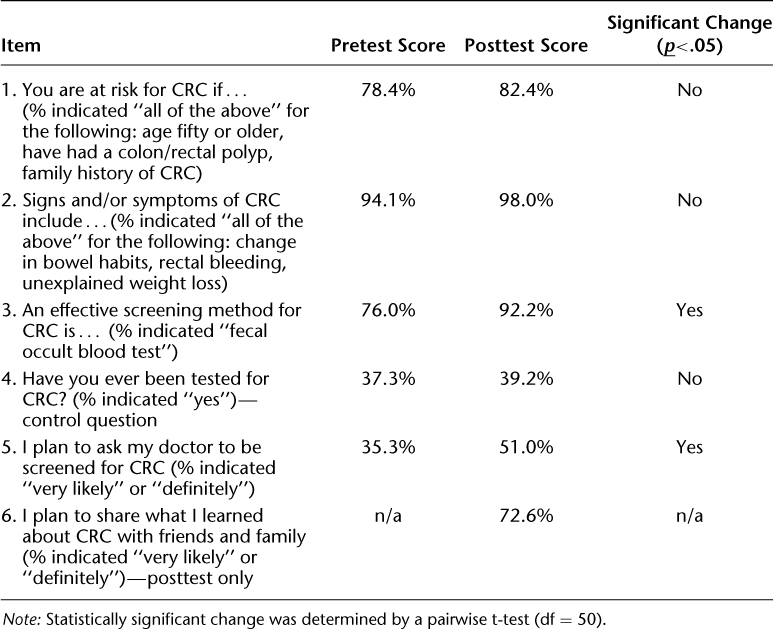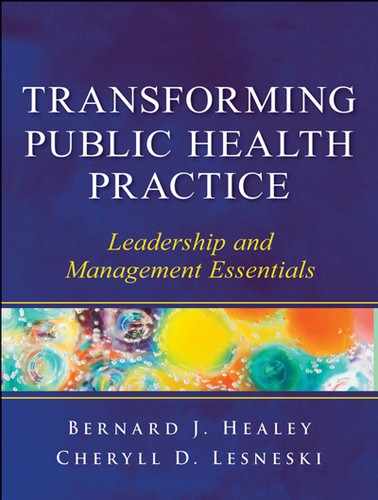Case Study 8
Innovation in Colorectal Cancer Education Programs
Colorectal cancer (CRC), the second most common cause of cancer death in the United States, is preventable if detected at an early stage. A readily available screening test can prevent many cases of this cancer by identifying precancerous polyps, which are then removed. Unfortunately, the majority of eligible Americans are not screened.
The rate of colorectal cancer in Luzerne County, Pennsylvania, is alarming, approximately 20 percent higher than the state average and nearly 40 percent higher than the national average. This case study demonstrates a way to increase the screening rate and reduce the incidence of this disease through the use of marketing strategies. These strategies include developing a target market; using a marketing mix, which involves the product, price, place, and promotion; conducting a SWOT analysis, which includes looking at the strengths, weaknesses, opportunities, and threats; and promoting and disseminating information concerning the return on investment (ROI) to other employers in the county in order to enroll more businesses in this project.
This colorectal cancer education program was developed and implemented by members of the Luzerne County Colorectal Cancer Task Force and initially involved two businesses in Luzerne County that agreed to aggressively market a colorectal cancer screening program to their employees over age fifty. A marketing plan was designed to increase awareness of the need for the screening beginning at age fifty and the dangers of ignoring this very preventable cancer. Information about the screening test was made available to all employees on each company's Web site for a two-week period before the online education program was conducted.
This online education program was developed on a local college's SharePoint site, which is a dedicated virtual site where data can be entered. It began with a pretest, which consisted of a series of questions about the epidemiology of colorectal cancer, the testing procedure, those at high risk of developing the disease, and a testimonial from a colorectal cancer survivor. The pretest was followed by an eleven-minute colorectal cancer education program, which comprised a series of voice-narrated PowerPoint slides discussing the risk factors for developing colorectal cancer, the various tests available for this disease, and recommendations for those at high risk for developing this disease. The program concluded with a posttest, incorporating all of the questions from the pretest, which was designed to assess the knowledge participants gained from the education program.
The first colorectal cancer education program was completed during May 2009. There were 504 employees eligible to take advantage of the program, and the employer offered incentives to encourage employees to complete it. There were 184 employees who participated in the program, representing 36.5 percent of those eligible to attend.
Information concerning the availability of the program was sent by e-mail and in letters to all employees on two separate occasions. An incentive was offered to program participants for attendance (a ten-dollar Barnes & Noble gift card or two free movie tickets). There were twenty-eight employees who indicated a willingness to receive a follow-up phone call from the American Cancer Society six months after program completion.
The first three items in Table CS1 were used to assess the subjects' knowledge in regard to CRC. For all three items the subjects' knowledge of CRC significantly improved in the posttest compared to the pretest. Item 4 was inserted in both the pretest and the posttest to make sure the subjects were carefully reading the items. Because the pre- and posttests were administered over a short time period, as expected, there was not a significant difference in scores on this item. Item 5 was used to see if the program may influence subjects' behavioral intentions in relation to CRC. As indicated in Table CS1, a significantly higher percentage of subjects intend to get screened for CRC as a result of the program. Moreover, item 6 pertains to another aspect of the subjects' behavior: the vast majority of the subjects clearly intend to share what they have learned with their family and friends. Only 1.6 percent of the subjects responded “no” to this item. Overall, these subjects learned key information on CRC and are likely to take action to help prevent or at least detect CRC in themselves and others they care about.
Table CS1 Pre- and Posttest Results for Program 1 (n = 184)

The second colorectal cancer education program was completed during June and July 2009. There were 298 employees who were eligible to take advantage of this program, and the City of Wilkes-Barre offered incentives to encourage them to complete it. There were 51 employees who participated in the program, representing 17.1 percent of those eligible to attend.
Information concerning the availability of the program was sent by e-mail and in letters to all employees on two separate occasions. An incentive was offered to program participants for attendance (a ten-dollar gas card). There were thirteen employees who indicated a willingness to receive a follow-up phone call from the American Cancer Society six months after program completion.
The results from this program were somewhat comparable to the findings from program 1. As shown in Table CS2, for all three knowledge questions, scores improved from the pretest to the posttest. However, in only one item (item 3) was this change statistically significant. One reason why significant changes were not found in the first two knowledge questions is the smaller sample size in program 2 compared to program 1. Further, the subjects in program 2 had a much stronger knowledge of the signs and symptoms of CRC prior to the education program. Thus, there was very little room for improvement. Similar to subjects in program 1, as expected, subjects in program 2 did not indicate a significant change in prior testing for CRC. Moreover, these subjects are also more willing to be screened for CRC after the program as compared to before the program. Finally, a very large percentage of subjects plan to share this CRC information with their loved ones.
Table CS2 Pre- and Posttest Results for Program 2 (n = 51)

Both groups gained valuable knowledge from this education program on CRC. In addition, both groups appear to have intentions to help prevent or detect CRC in themselves and their loved ones. Thus, the program had value in meeting this important health promotion objective.
Colorectal cancer screening is a cost-effective preventive program that is being used by far too few individuals despite its being readily available and paid for by most health insurance programs. Recent research clearly indicates that colorectal cancer screening is often a missed opportunity that will save many lives and result in a reduction in the costs associated with this expensive and deadly form of cancer.
The results from this colorectal cancer education program offer strong support for the accomplishment of the goals put forth in the Luzerne County Colorectal Task Force's original mission statement. For example, on the posttest, as compared to the pretest, a significantly higher percentage of the employees in program 1 and program 2 indicated that they are likely to ask their doctor to be screened for colorectal cancer—a desired outcome of the program. Almost all of the participants in both programs indicated that they are likely to share what they learned from the program with friends and family members, which represents another intended outcome of the program.
1. Can this approach of developing online health education programs work with other chronic diseases?
2. Can employers use marketing skills to increase the participation rates in online education programs?
3. What is the best way to share the results of the program discussed in this case study with other communities?
